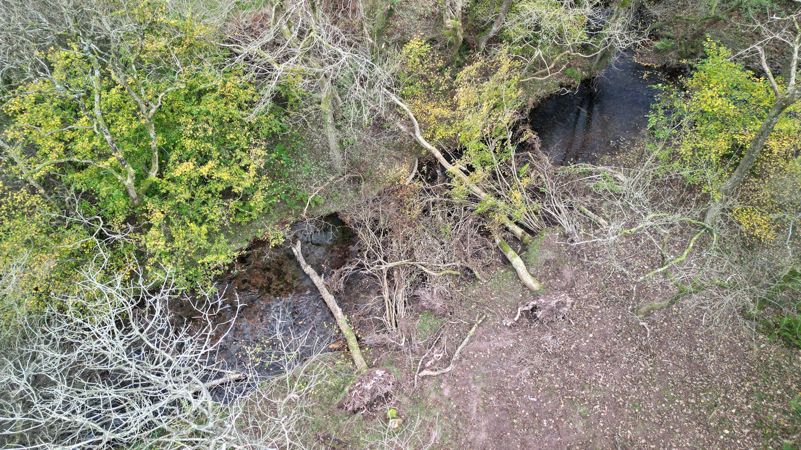NRW and National Trust working together to restore and protect the River Usk

A river habitat restoration scheme has been completed on the River Usk to renaturalise the river and reconnect it to its natural floodplain.
The scheme focussed on a stretch of the River Tarell, an important tributary of the River Usk SAC (Special Area of Conservation), and aimed to restore the river’s natural processes by re-introducing wood into the river channel.
Led by the Natural Resources Wales (NRW) Four Rivers for LIFE project and the River Restoration Centre (RRC) – the scheme is part of a wider nature restoration project by the National Trust at their site.
Much of the upper part of the River Tarell catchment flows through land under National Trust ownership at their Ty Mawr Farm site in the Brecon Beacons.
The work saw 40 trees winched into a 600 metre stretch of the river channel to create 14 large wood structures. These were strategically positioned to encourage floodplain reconnection and improve habitat, whilst maintaining access for migratory fish.
The trees were wedged into the riverbank to minimise the risk of them becoming displaced during high flows. Ash dieback had affected a significant number of trees in the area, so these were the first trees to be used in the scheme.
Large woody material plays a wide range of important functional roles in river ecosystems, and is now increasingly recognised as one of the fundamental components of a healthy river system, alongside sediment and water supply.
Peter Jones Four Rivers for LIFE River Restoration Officer said: “After only just six months we’ve started to see the benefits with new gravel areas forming and improving conditions for salmon spawning.”
“Also, during Storms Bert and Darragh, the river flooded out onto its natural floodplain, which is exactly what we had hoped it would do. This means that a considerable amount of water was being held back and not reaching downstream during a peak weather event.”
Alan Kearsley-Evans from the National Trust said: “This river habitat restoration project is an excellent example of how relatively minor restoration works can kick start natural processes and promote ecosystem recovery.”
“Naturally functioning ecosystems are far more robust and resilient to future environmental pressures. The work was accompanied by a tree planting scheme this March to encourage woodland recovery across the Ty Mawr Farm estate.”
A widespread issue with river habitats in the UK is that they have been altered to reduce their natural dynamism.
Naturally functioning rivers should regularly inundate their floodplains, increasing wetland habitat locally and reducing overall flood risk downstream. In their natural state, they would also have fallen trees across and within the river channel, helping the river find new flow paths and creating habitat diversity and enhancing rivers for wildlife.
In-river trees help the movement of gravel and create spawning habitat for a wide range of fish. Wood also provides shade and keeps rivers cool in the summer, reducing some of the harmful effects of climate change. It can also slow the flow of water, reducing the peak of flood events.
The Four Rivers for LIFE Project is funded by the EU LIFE Programme with support from Welsh Government and Dwr Cymru Welsh Water.
